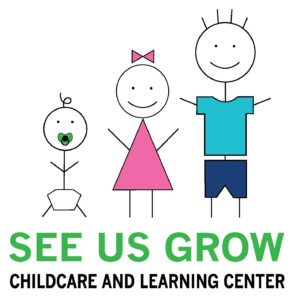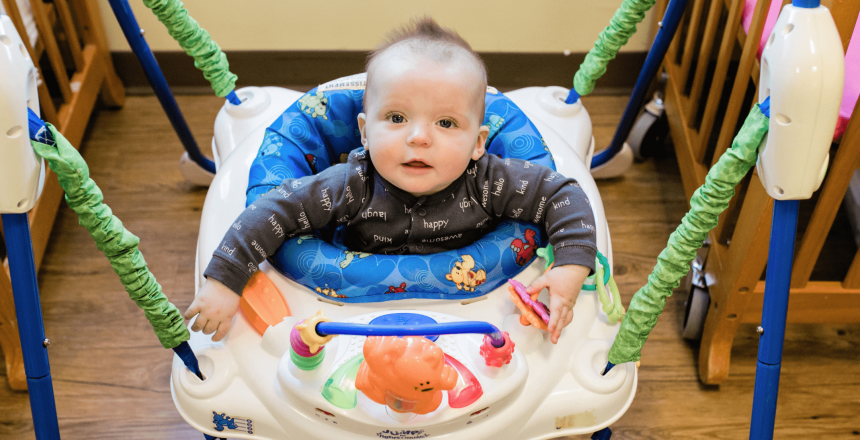Many times, when people hear that the See Us Grow curriculum includes a program for infants as young as 6 weeks old, they’re surprised.
“Really? Do infants need a curriculum?”
The answer is easy. Yes!
According to the National Association for the Education of Young Children (NAEYC), when you’re looking for child care, one sign of a high-quality program is the use of a developmentally appropriate curriculum, even for the littlest children. NAEYC says such a program guides caregivers to provide infants with the materials and activities they need to meet their developmental goals even at these early stages.
“I know it may be interesting to hear that a 6-week-old can benefit from curriculum,” said See Us Grow owner Kelly Brennan. “You usually equate a curriculum with children who are in elementary school and beyond. But curriculum doesn’t only mean learning facts and figures. Curriculum also covers things as basic as an infant building trust with a teacher and providing a safe and nurturing environment. It’s making sure to provide the physical needs for growth, like tummy time and hand grip. It’s beginning to understand social emotional cues, like facial expressions and sounds. Curriculum at this early stage is so critical.”
Of course, our infant curriculum at See Us Grow is far different from what you would find for older age groups we serve. While these youngest children in our care don’t yet read or write, there’s a lot going on in their brains.
A child’s brain undergoes an amazing period of development from birth to three which produces more than a million connections each second.
The following activities can help start the connections early on:
- Reading, telling stories, talking, and singing with an infant can help connect the neurons in the brain for future language development.
- Smile at your baby—it makes them feel safe and builds attachment.
- Make eye contact and respond to their cues. If they start to coo or vocalize, talk back. “Serve-and-return” communication is a well-studied element of a child’s brain development.
- Play games like peekaboo with infants to help your baby see the connection between his actions and what is happening. Keep your patience and sense of humor when dropping toys becomes a game.
- Encourage your infant to reach for toys because they are starting to see bright colors and objects.
- Hold your infant while feeding them and talk to them. The part of the brain that registers and processes touch is already well developed.
The infant curriculum at See Us Grow supports a child’s growth in all areas of development, including physical, social and emotional, language and communication, cognitive, creative arts and outdoor learning and nature.
See Us Grow provides a curriculum that affords infants with opportunities to develop and build physical, cognitive, social/emotional and even communication skills. Although the infancy stage is brief, infant development occurs rapidly and can be measured by typical developmental milestones.

